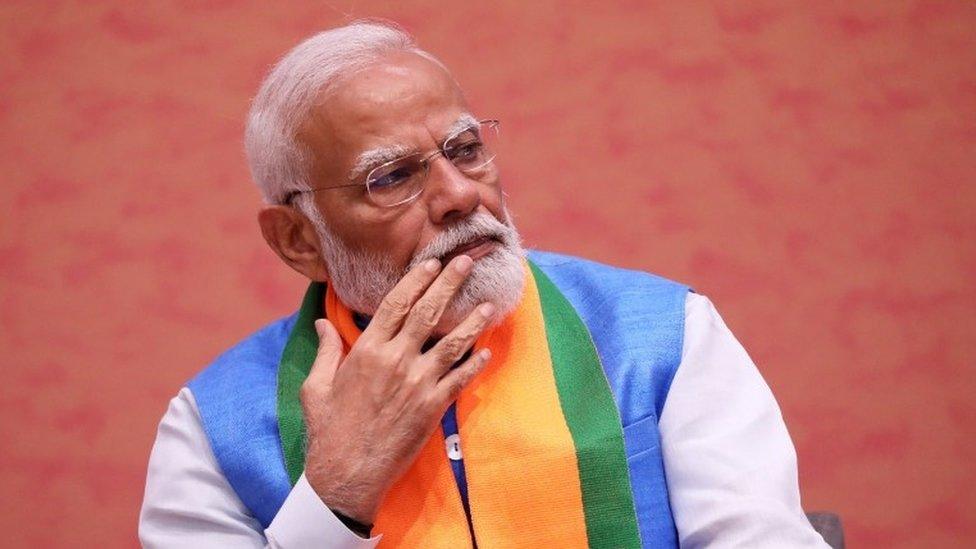Why Obama's India visit charts new course
- Published
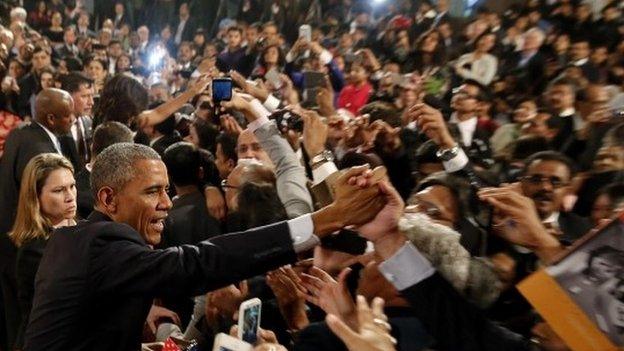
President Obama's visit was seen as heavy both on symbolism - and substance
US President Barack Obama's recent Delhi visit reflects a new direction in Indian foreign policy, writes analyst Seema Sirohi.
The United States said a decade ago it was making a "long-term strategic bet" on India and the visit showed that India was also ready to reciprocate.
Mr Modi and Mr Obama declared a "global partnership" - indicating that the US was not a mere strategic partner but India's principal strategic partner in the world.
The visit was heavy both on symbolism and substance. Barack Obama became the first US president ever to be the chief guest at India's Republic Day and the first to visit India twice during his presidency.
On the substantive front, the most important takeaway from the Modi-Obama summit is the coming together of India and the US on "grand strategy" in Asia.
The signing of the "Joint Strategic Vision for the Asia-Pacific and Indian Ocean Region" may sound mild but it is packed with signals - to China. This is the first time India and the US have come together openly to say that they do not want Asia to be dominated by one power.
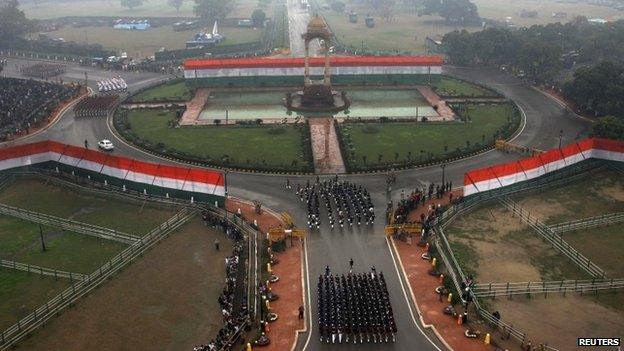
Mr Obama was the first US president to be chief guest at India's Republic Day parade
They will work together to keep freedom of navigation, maritime security and air space safe, especially in the South China Sea. They asserted that all disputes must be resolved within international law.
These are pointed references to China's behaviour in the region where it is embroiled in disputes with the Philippines, Vietnam, Japan and even Indonesia. The statement shows that Mr Modi and Mr Obama share a common assessment on China.
But is also important to remember that this is not an "alliance" against China since both India and the US are economically engaged with Beijing. It is a sort of building of fences to ensure China follows international rules.
The other important takeaway was the renewing of the 10-year India-US defence framework agreement, which envisages more military co-operation between the two countries. The two also decided on four defence projects for co-development and co-production.
Although modest in scope, the projects will help India to start upgrading its defence manufacturing abilities.
The personal equation between Mr Modi and Mr Obama also helped get rid of long-standing problems in putting the civil nuclear deal into operation.
The US made a concession to withdraw its demand to "monitor in perpetuity" any nuclear material it sold to India which, in turn, offered to create an insurance pool to protect US suppliers from law suits.

The personal chemistry between Mr Obama and Mr Modi is a feature of the new Indo-US relationship
While some analysts are sceptical of a real breakthrough, at least the two governments have reached an understanding. Now it is up to the private sector companies in the US to take the ball further.
What the latest visit and the personal chemistry between Mr Obama and Mr Modi indicates is that Indo-US relations are set to move to the next level because the top leadership has developed a personal stake in the relationship.
This means pressure on the two bureaucracies to sort out their differences and deliver on the promise of the relationship.
President Obama's public address to Indians as his last event in Delhi was the icing on the cake - he celebrated India's diversity and hoped that the country won't splinter along religious lines or any other lines.
It was a gentle reminder from the visitor that it would take a strong India to face the multiple challenges in Asia.
Differences will remain as between any two friends but the old-style suspicion of each other which manifested itself as knee-jerk anti-Americanism in India and irritation with India in the US, will diminish.
This in the end means a stronger relationship which gives India diplomatic and strategic space against difficult neighbours.
- Published26 January 2015
- Published26 January 2015
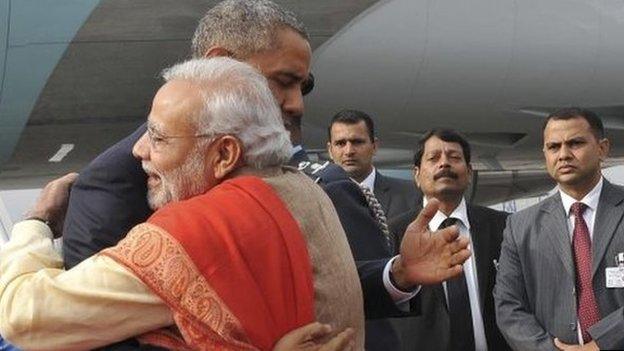
- Published22 January 2015

- Published26 January 2015
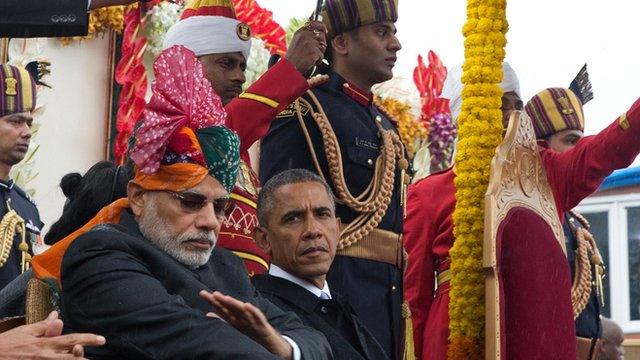
- Published23 January 2015
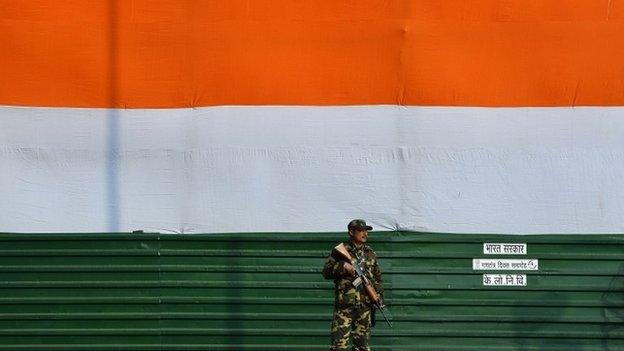
- Published26 January 2015
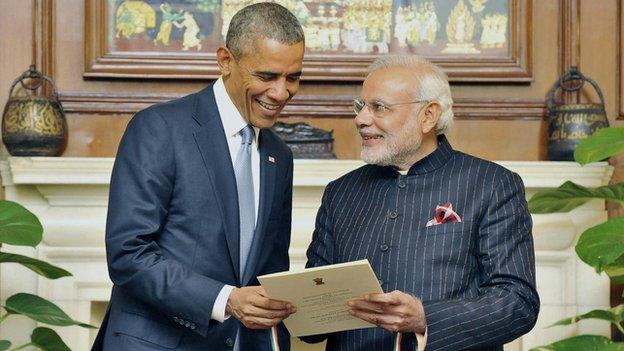
- Published25 January 2015
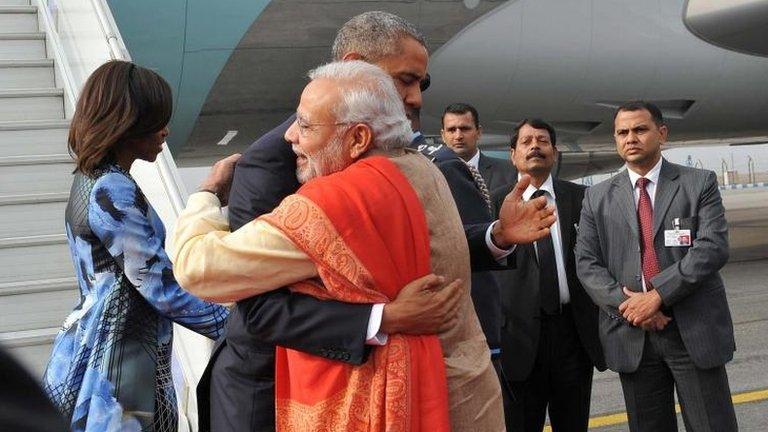
- Published22 January 2015
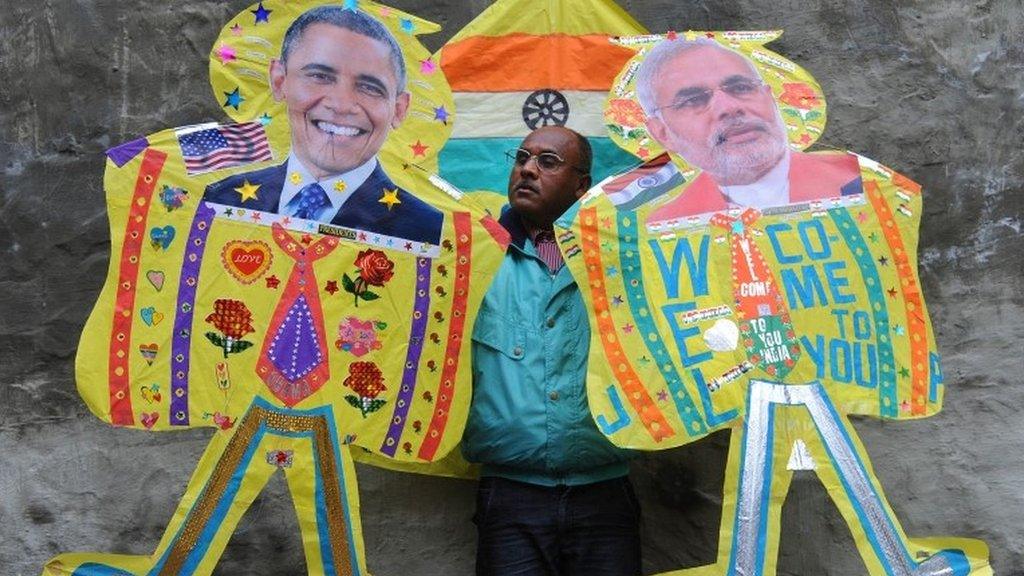
- Published23 April 2024
